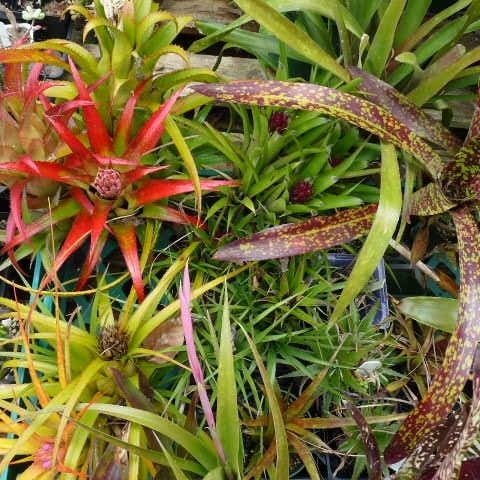Best Air-Purifying Indoor Plants (A-C)
�� The Best Indoor Plants
for Air Purification: A-C
The Power of Plants: Why We Need Them Indoors
Because there are so many truly useful air-purifying plants, I’m creating a few separate blog posts to cover all my research. Here is the first section, covering plants in botanical order from A-C.
While we love bringing nature’s beauty indoors, let’s be honest—no plant is naturally a houseplant. They’re outdoor champions we’ve cleverly adopted! But when we do bring them in, it’s amazing how some of these chosen beauties can genuinely improve our indoor environment.
The Science Bit: Thanks, NASA!
The National Aeronautics and Space Administration (NASA) actually carried out a groundbreaking Clean Air Study. They found that certain common houseplants are brilliantly capable of filtering out a number of nasty pollutants from our air, such as:
-
Formaldehyde: Found in things like paper towels, facial tissues, tobacco smoke, new carpets, and some adhesive binders.
-
Benzene: Lurks in varnishes, detergents, paints, plastics, and gasoline.
-
Trichloroethylene: Found in printing inks, varnishes, adhesives, and lacquers.
-
Ammonia: A common component in many cleaning products.
-
Toluene: Used in stain removers, paint thinner, nail polish, and some inks.
-
Carbon Monoxide: Comes from vehicle, fireplace, stove, and furnace fumes.
-
Styrene: Often found in carpet backing, home insulation, and packaging.
Want to dive deeper into the original research? Have a read of the full study here:
NASA Clean Air Study Link
Air Purifiers from A to C
1. Aglaonema – Chinese Evergreen
The Chinese Evergreen is a wonderfully common and incredibly tough tropical houseplant, making it a stellar choice for any home.
-
Toxin Fighters: This gem effectively cleanses the air of formaldehyde and benzene—those common toxins in detergents and cosmetics. It also tackles carbon monoxide and trichloroethylene.
-
Special Abilities: It emits a high oxygen content, and some studies suggest it can improve your productivity, concentration, memory, and even mood!
-
Looks: They come in a stunning variety of shades, including gorgeous pinks, reds, oranges, yellows, and greys.
-
Care Advice: These prefer low-light and humid conditions, so they’ll truly thrive in a bathroom. Water occasionally, focusing on keeping the soil moist but not soggy.
-
Best Placement: The Living Room (as a great all-rounder).
2. Aloe barbadensis – Aloe Vera
Such an incredibly useful succulent, the Aloe Vera is a staple in my plant collection.
-
Toxin Fighters: Beyond its famous burn-soothing qualities, it’s a champ at purifying the air of formaldehyde and benzene—toxins found in varnishes, floor finishes, and detergents. It also tackles carbon monoxide.
-
Special Abilities: It’s an essential first-aid plant for treating minor burns and scrapes.
-
Care Advice: As a succulent, it absolutely requires strong, bright light and free-draining soil. Water well, then allow the soil to dry out completely between waterings. And be sure to keep it away from any frost!
-
Best Placement: The sunniest windowsill, like in the kitchen (where you might need it for a burn!) or a sunroom.
3. Anthurium – Flamingo Plant
This vibrant plant boasts blooms that truly look like elegant salmon-red, heart-shaped flamingos—hence the lovely common name, Flamingo Lily! And good news, newer colour shades are popping up all the time.
-
Toxin Fighters: Anthuriums filter a great combination of toxins, including ammonia, toluene, and formaldehyde.
-
Care Advice: Keep your Anthuriums in bright, but indirect light. They also work particularly well in humid areas, such as the bathroom or kitchen, as they adore moisture.
4. Bromeliad (Various Types, e.g., Pineapple Plants, Scarlet Star Bromeliad)
With their leathery leaves and stunning pop of central colour, Bromeliads are a truly striking addition to any houseplant lineup.
-
Toxin Fighters: These, too are fantastic at helping to clean up the air in your home!
-
Care Advice: Bromeliads love warm, sunny conditions, so they're best kept close to a sunny window or in a bright conservatory. They’re not heavy drinkers; wait until the soil has dried out completely before watering, then water both the leaves and the soil.
-
See what’s in stock! Take a look at some of the Bromeliads I have available right now on the website: here
5. Calathea – Prayer Plant
The leaves on these plants are simply mesmerising. They actively move—sometimes catching your eye as they shift from an upright position to a downward position throughout the day!
-
Toxin Fighters: The Calathea is brilliant at purifying the surrounding air by filtering out a multitude of poisonous compounds.
-
Looks: There are so many different colour combinations and various sizes in these plants—a true collector's delight!
-
Care Advice: They need to be placed in a consistently warm and bright spot, yet shielded from direct light.
-
Pest Alert: Some varieties are very prone to spider mites, so keep a sharp eye out for these tiny pests. If you notice the leaves losing their dramatic colourings, looking 'sad', or becoming deformed, mites could be the cause.
See more about how to deal with them here -
Botanist's Note: Calathea and Ctenanthe are often confused! The key difference is that Ctenanthe reproduces above-ground branching stalks, while Calathea only creates new leaves from the root mass.
6. Chlorophytum comosum – Spider Plant
.
The ultimate easy-care champion, Spider Plants are the perfect choice for people new to having houseplants—they are simply gorgeous, sprawling greens.
-
Toxin Fighters: These plants quietly battle toxins, including carbon monoxide and xylene (a solvent used in the printing and rubber industries), plus benzene, styrene, formaldehyde, and toluene.
-
NASA Stats: NASA's study famously found that Spider Plants were able to remove a whopping 95% of certain chemicals from the air in just 24 hours!
-
Special Abilities: They are also known to have beneficial hormone properties; try popping some 'spiderettes' in with your other plants if you propagate in water.
-
Pet-Friendly: If you have pets, this is one of the few common houseplants that is completely non-toxic to animals.
-
Care Advice: These are truly easy-care plants. Pot them up and appreciate their display! You can leave the growths (the 'spiderettes') that develop at the end of the stalks, or simply snip them off and pot them up for brand new tiny plants.
-
Best Placement: The bedroom or the living room
7. Chrysantheemum (Commonly called "Mums')
Often purchased as beautiful Mother’s Day gifts, these are naturally outdoor plants that have been conditioned to grow inside for a stunning display.
-
Toxin Fighters: These pretty blooms help to filter out a host of toxins, including ammonia and benzene (often found in plastics, detergents, and glue).
-
Vibrancy: Thanks to their beautiful flowers that bloom in a variety of vivid colours, these are one of the most vibrant houseplants you can find.
-
Scent Check: Be aware the scent can be either quite strong or something you really love!
-
Care Advice: This plant absolutely loves sunlight, so place it near a sunbathed window. They are also a lovely addition to your garden once they finish blooming indoors.
8. Clivia
I’ll admit, I’ve never grown these as houseplants—I much prefer them outside! However, they are a fantastic, tough, and resilient plant that thrives even when neglected.
-
Toxin Fighters: They effectively purify the air, making them a great indoor choice!
-
Looks: They have strong, strappy, glossy, deep green leaves.
-
Blooms: They produce the most stunning, bright blooms. Originally, the colours were red/orange, but you can now find various shades of red/pink as well as beautiful yellow ones.
-
Care Advice: Clivias should be placed in filtered or indirect light. Outside, they are ideal in shady, dry positions, providing those dark spots with welcome brightness.
9. Codiaeum – Croton
Loved for their varied, bold, and bright foliage, Crotons are an incredibly popular tropical houseplant.
-
Toxin Fighters: Crotons also do their bit to help filter out airborne toxins, making them both beautiful and beneficial!
-
Care Advice: As tropical houseplants, they do require frequent watering, but be careful—too much can easily cause root rot. Consistent humidity also helps these beauties flourish.
Stay tuned for the next selection of air-purifying plants (D-F, perhaps?).
In the meantime, you can find a link to all my previous blogs right here:
Posted: Wednesday 24 May 2023
Recent Posts
Archive
Tags
| Top |



